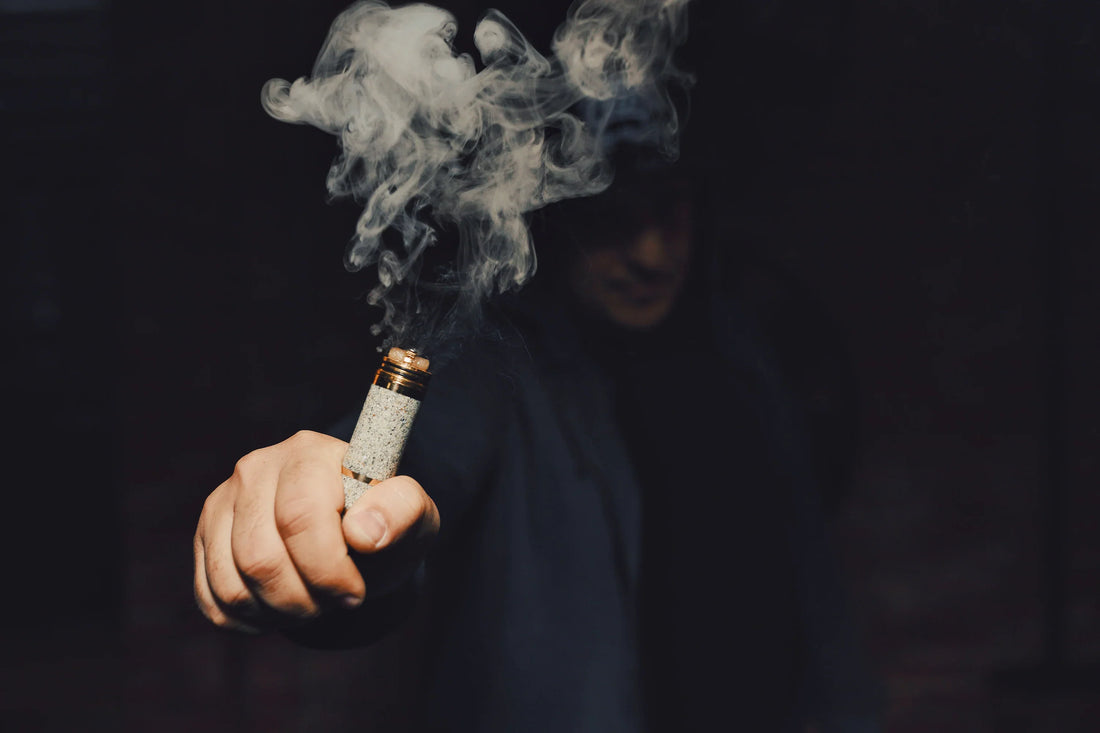
What you don't know about vape vapor
Share
 Perfect Vaping: The Benefits and Risks of the Build Process
Perfect Vaping: The Benefits and Risks of the Build Process
Vaping has long been considered a healthier alternative to traditional cigarettes, and research shows that it is up to 95% safer when used correctly. Not only does it reduce harmful substances from the combustion process, but it also offers a range of customization options, from e-liquid flavors to heat levels and smoke volume. However, the safety and quality of vaping largely depends on how the device is set up. Even a small mistake – from setting the wrong heat level, to careless installation of the coil, to using low-quality e-liquid – can turn vaping from “safe” to “harmful”. Therefore, understanding the technical factors in the setup process will not only help you get the most out of your vaping experience, but it will also protect your own health.
In this article, we will explore the important factors that will ensure that any vaping product meets standards – it is safe, of high quality, and a truly valuable alternative to cigarettes.
I. What are the components of vaping vapor produced from a perfectly tuned device?
You may or may not know, but the essence of vaping is the “evaporation” of essential oils and there is no “burning” like with traditional cigarettes. Although both processes produce the same floating “mist” of a grayish-blue color, the temperature difference between the two processes is very large.
When vaping, the essential oil is converted from a liquid to a vapor at a temperature of 190-210°C (about 375°F). Compared to the burning of traditional cigarettes, the temperature of tobacco leaves when smoked typically ranges from 600°C (the edge of the cigarette) to 900°C (the center of the cigarette). This high temperature is why cigarette smoke contains so many toxic substances. When smoking traditional cigarettes, you inhale not only nicotine, terpenes, phenols, and tobacco alkaloids, but also more than 7,000 other chemicals produced during the combustion process, collectively called “tar,” which have extremely negative consequences for the user’s cardiovascular, respiratory, and digestive systems.
Back to vaping. At just 190°C, almost none of the essential oil components are broken down by heat, so the vapor from vaping contains absolutely no tar like cigarette smoke. This temperature is just enough to turn the components in the essential oil from liquid to vapor. So, in the case of a standard setting, no foreign chemicals are produced during the vaporization process. The vapor from vaping will consist of only 4 main components, including VG, PG, Nic and flavor!
II. Possible errors during setup, signs of recognition and consequences
As mentioned in the previous section, vaping is only truly safe when the coil temperature does not exceed a threshold and the components in the e-liquid are decomposed, while ensuring that the essential oil is as pure as possible. In this 2nd part of the article, we will learn about the errors that can occur during the burner setup/preparation process, how to recognize them, how to fix them, and what consequences this will bring to the user.
1. Error in the build process
These are errors that arise from the technique of installing coils, cotton, etc. when setting up the atomizer configuration. The most common is the “hot-spot” error, a mistake that everyone who starts making coils makes.
A hot spot is a phenomenon where the electric current does not flow evenly through all parts of the coil, but is “stuck” at one point, causing that point to be hotter than the rest of the heating core. A hot spot can be recognized by the uneven smoke when releasing the cotton or, more easily, by a bright red dot on the coil that is extremely “itchy” when heated. The temperature at the hot spot can easily exceed 350°C and cause the rapid decomposition of PG and VG, creating new undesirable substances. Under normal conditions, VG and PG are relatively stable, but when exposed to extremely high temperatures and the presence of oxygen, they create by-products such as acrolein (decomposing VG), formaldehyde and acetaldehyde (decomposing PG). These newly produced substances are very toxic and cause severe irritation when inhaled, so you will immediately recognize it by the burning and scratching in your throat from the first second of contact with the vapor from the vaporizer.
Repairing the hot spot is relatively simple, just use ceramic tweezers to heat the coil and gently stretch the coil rings and lightly stroke the surface to flatten the wire layers that are not fully tightened. Repeat the above 2 steps until you heat the coil to be evenly red hot, hot from the center and then spread to the 2 edges, then you will be successful.
2. Usage errors/regular maintenance
Even if you have set up a perfect coil without hot spots or ohm jumps, there is still a risk of errors in using the vaporizer that will cause the regulatory threshold to be exceeded and lead to